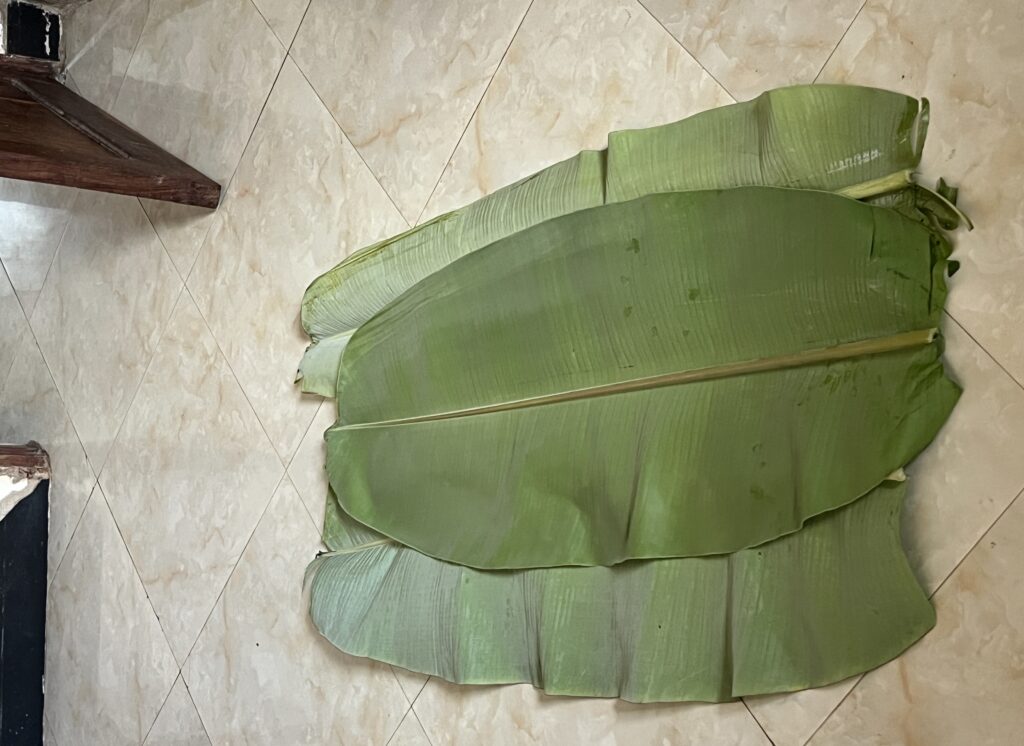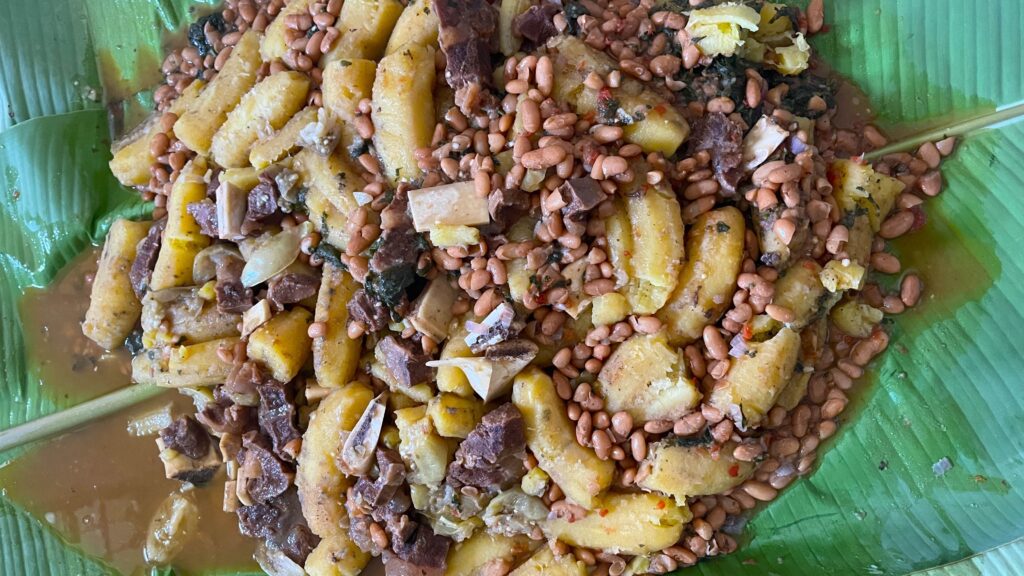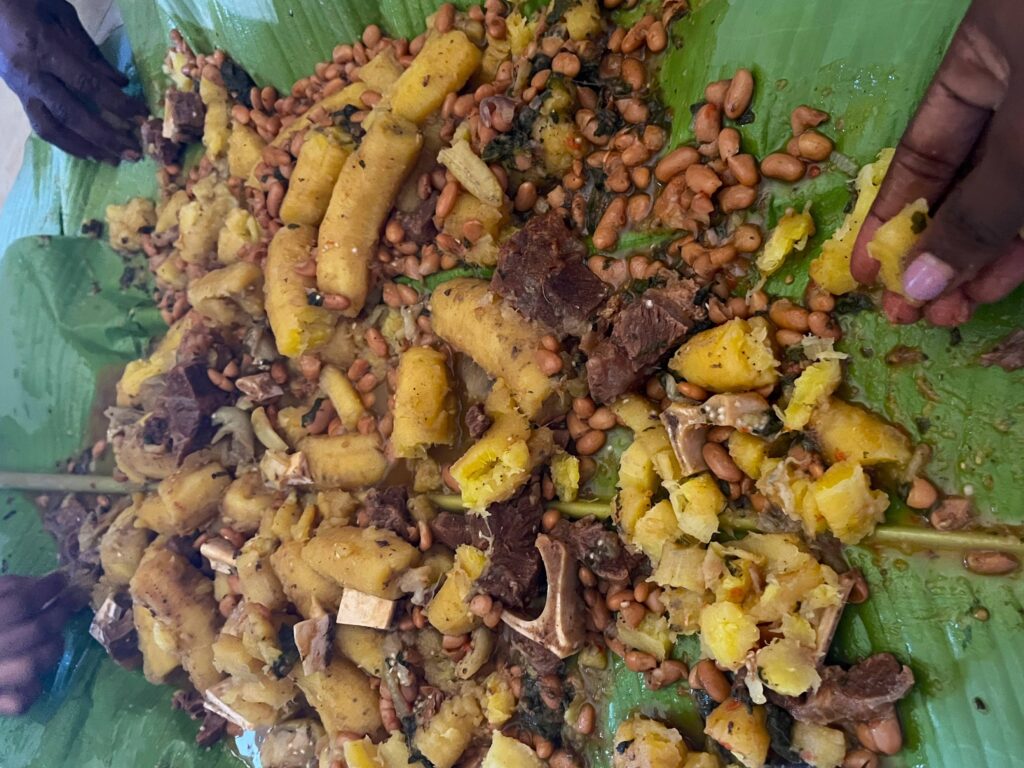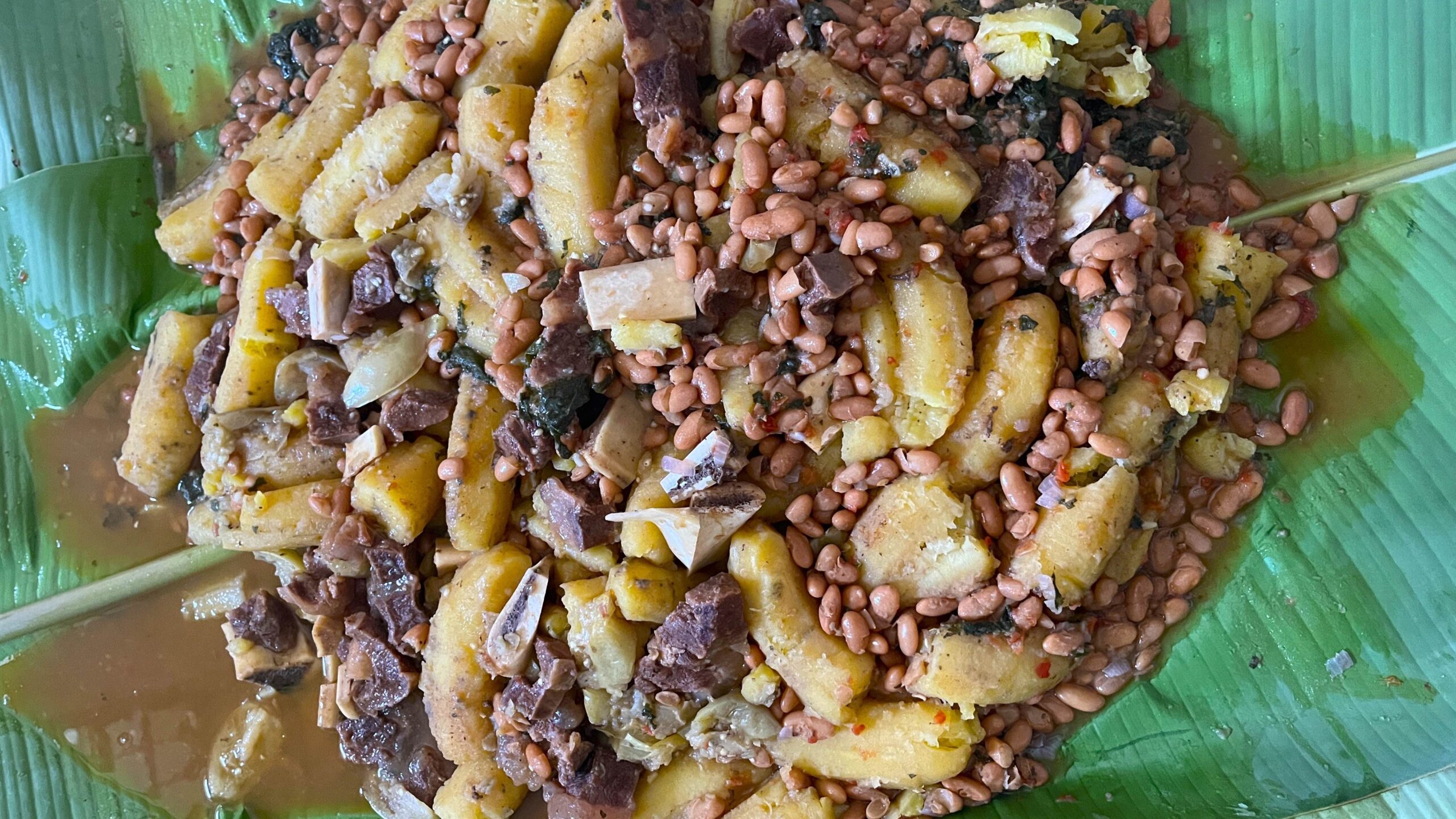In the heart of Bukoba, nestled along the shores of Lake Victoria, the Haya people have nurtured a rich and vibrant food culture that reflects their values of community, respect, and harmony with nature. From the preparation of meals to the art of serving and eating, every step is steeped in tradition and meaning.
Setting the Scene with Mkeka wa Milala: A Communal Mat of Unity
Before a Haya meal begins, a traditional rush mat, known locally as a mkeka wa milala, is laid out on the ground. At the center of this mat, banana leaves—cut fresh from the local banana plants—are carefully arranged, their edges pointing towards the entrance of the room. These leaves not only serve as a natural platter but also symbolize a connection to the land that nourishes the community.

Serving with Care and Respect

The pot of food, filled with staples like bananas, meat, beans, and vegetables, is placed on the mat. The banana leaves covering the pot are gently pressed down, mixing the food and creating a dense texture to prevent the sauce from spilling. This meticulous act reflects the Haya’s philosophy of treating food with reverence and care.
The food is then served directly onto the banana leaves, with everyone gathered around the communal setup—a practice known as Ekifukokimo. This intimate arrangement fosters togetherness, turning every meal into a shared celebration.
Eating as an Artful Ritual
Haya meals are eaten by hand, and this tactile experience enhances the sensory connection to the food. Before the meal, water is brought for handwashing, a gesture of cleanliness and respect. As the meal progresses, calmness and gratitude fill the room.

A special ritual concludes the meal: the banana leaves used for serving are folded towards the entrance of the room and respectfully discarded. This act signifies the end of the meal while honoring the natural materials that served the community.
A Poetic Reflection: “I Trust My Hands, Not a Spoon”
The Haya tradition of eating with one’s hands is beautifully encapsulated in the poem, I Trust My Hands, Not a Spoon. The poet emphasizes the sensory joy of eating with one’s hands, describing how the fingertips transmit the texture, warmth, and essence of the food to the heart and mind. This practice is not only a sensory experience but also a mindful one, allowing the eater to connect with their meal in a profound way.
Discover the Full Story
The Haya people’s rituals around food offer a glimpse into a world where meals are more than sustenance—they are moments of unity, respect, and joy. Explore more about Tanzania’s rich culinary traditions in our From Shamba to Sahani cookbook.


Leave a Reply